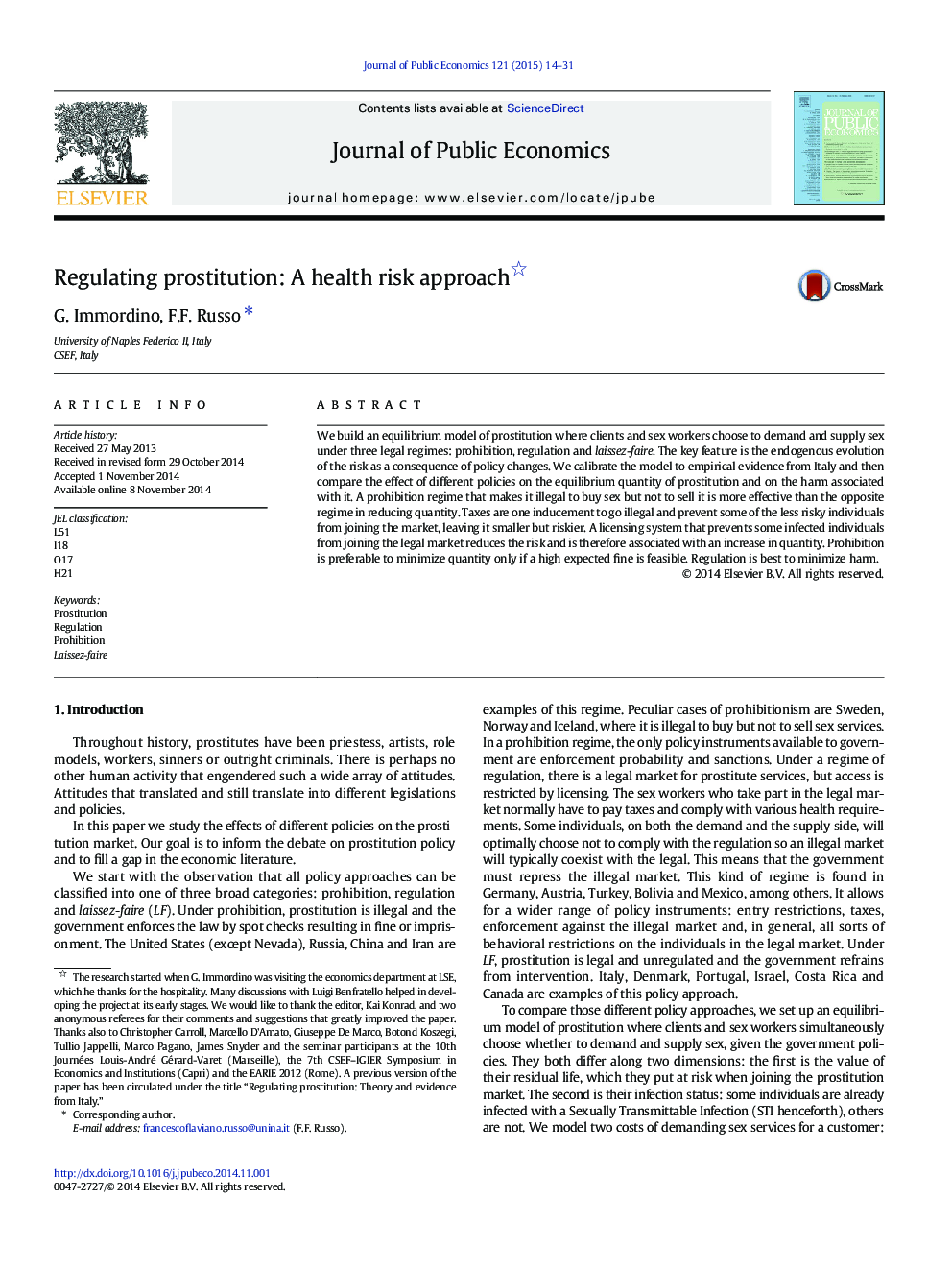| Article ID | Journal | Published Year | Pages | File Type |
|---|---|---|---|---|
| 969682 | Journal of Public Economics | 2015 | 18 Pages |
Abstract
We build an equilibrium model of prostitution where clients and sex workers choose to demand and supply sex under three legal regimes: prohibition, regulation and laissez-faire. The key feature is the endogenous evolution of the risk as a consequence of policy changes. We calibrate the model to empirical evidence from Italy and then compare the effect of different policies on the equilibrium quantity of prostitution and on the harm associated with it. A prohibition regime that makes it illegal to buy sex but not to sell it is more effective than the opposite regime in reducing quantity. Taxes are one inducement to go illegal and prevent some of the less risky individuals from joining the market, leaving it smaller but riskier. A licensing system that prevents some infected individuals from joining the legal market reduces the risk and is therefore associated with an increase in quantity. Prohibition is preferable to minimize quantity only if a high expected fine is feasible. Regulation is best to minimize harm.
Related Topics
Social Sciences and Humanities
Economics, Econometrics and Finance
Economics and Econometrics
Authors
G. Immordino, F.F. Russo,
